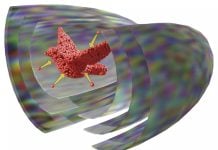
The Return of the Wind-Whispering Tower
Soon after its completion, One World Trade Center — the tallest building in the Western Hemisphere — began to produce a strange, resonant sound whenever strong winds swept through Lower Manhattan. The deep hum could be heard across blocks, bouncing between skyscrapers like an invisible foghorn.
Locals described it as “a ghostly wail” or “a giant flute” echoing through the Financial District, apparently ringing before or during extreme wind weather events like Hurricane Sandy:
The Science Behind the Hum
The phenomenon is caused by wind resonance — air moving across architectural features that create turbulence and periodic pressure pulses. At One World Trade Center, the culprit appears to be the spire and its latticework, which interact with the wind much like the reed of a clarinet or the neck of a bottle.
When the wind speed and direction align just right, the structure vibrates and emits a deep, sustained tone that can carry for hundreds of meters. It’s not mechanical, not electrical — just physics singing through glass and steel.
Architecture as an Instrument
Engineers call this effect aeolian resonance — named after Aeolus, the Greek god of wind. The same physics explains why power lines hum, or why a car’s antenna whistles on the highway.
But when the instrument is a 1,776-foot tower made of steel and glass, the result feels otherworldly. Many New Yorkers who heard the sound in 2013–2014 described it as “spiritual” — as if the rebuilt tower were speaking for the ghosts of Ground Zero.
Not Alone in the Choir
The WTC hum isn’t unique. Across the Atlantic, Manchester’s Beetham Tower produces a nearly identical moaning sound when the wind hits its glass fins. Both structures demonstrate how modern architecture can accidentally turn into colossal wind instruments — part physics, part urban mythology.
Can the Hum Be Fixed?
Engineers attempted to reduce the resonance by altering the spire’s design, but certain wind conditions still trigger faint harmonics. Unlike mechanical vibration, these acoustic modes can be unpredictable, shifting with temperature, wind speed, and humidity.
So while the volume may vary, the One World Trade Center Hum remains part of New York’s acoustic identity — a reminder that even steel skyscrapers have a voice.
One World Trade Center’s hum in the streets of Manhattan:
FAQ: The One World Trade Center Hum
What causes the World Trade Center Hum?
Strong winds passing around the spire and architectural edges of One World Trade Center create air vortices that vibrate at low frequencies, generating a deep humming tone audible in parts of Lower Manhattan.
Is the WTC Hum related to “The Hum” phenomenon?
It sounds similar but has a known cause. Global “Hum” reports remain largely unexplained, while the WTC version is clearly linked to wind resonance in the building’s spire.
How loud is the WTC Hum?
Reports suggest the sound hovers around 180–200 Hz — low enough to vibrate windows but not loud enough to be harmful.
Can the sound be eliminated?
Modifications have reduced it, but total silence is unlikely. Like a natural instrument, the structure will always resonate under the right conditions.
Does this happen elsewhere?
Yes. The Manchester Hum and other skyscraper howls worldwide share the same cause — wind interacting with design features that weren’t meant to sing.













I heard the sounds about 4:15 a.m. in new town Square, Pa.and they are very scary. About 16-18 times.
[…] you probably remember the eerie sounds coming from One World Trade Center tower? They were produced by the wind battering Manhattan and its […]